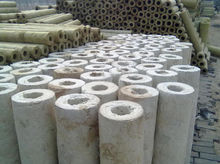
Yingkou Qingying Petrochemical Equipment Co., Ltd
Marketing department: manager Guo
Mobile: 18641771136
Purchasing department: Manager Zhu
Mobile: 13050617889
Address: No. 58, South Binhai Road, Xishi District, Yingkou, Liaoning, China
A pressure vessel explosion is an extremely rapid physical or chemical release of energy. Pressure vessel rupture is divided into physical explosion phenomenon and chemical explosion phenomenon. Heavy Oil Catalytic Cracking Unit
The so-called physical explosion phenomenon is the rapid expansion of high-pressure gas in the container and the release of internal energy at a high speed.
The chemical explosion phenomenon and the energy released by the chemical reaction at a high speed are often more serious than the physical explosion phenomenon. The hazards when the container is ruptured usually include the following:
(1) Destruction of debris. The reaction force of the gas ejected at high speed pushes the shell in the opposite direction of the rupture. Some shells may break into pieces or scatter around and cause a hazard.

(2) Shock wave hazards. Except for a small part of the energy when the container ruptures, it is mostly used to tear the container further and eject the container or fragments, and most of the energy generates a shock wave. Shock waves can destroy buildings, severely damage equipment and pipes, and shatter windows and doors in the distance. Shock waves can cause casualties to surrounding people just as hazard from debris.
(3) Poisoning by toxic media. When the container containing the toxic medium is ruptured, it will cause a large area of poisoning. Toxic liquefied gas evaporates into gas, which is very harmful. Generally, for containers that rupture at room temperature, the volume of vapor generated by most liquefied gases is about two to three hundred times that of liquids. For example, liquid ammonia is 240 times, liquid chlorine is 150 times, hydrocyanic acid is 200 to 370 times, and liquefied petroleum gas is about 180 to 200 times. Toxic gases cause death or severe poisoning of living organisms in a wide range. For example, when a ton of liquid chlorine container ruptures, it can cause a lethal area of 8.6×104 m3 and a poisoning area of 5.5×106 m3.
(4) Combustion of flammable media and secondary space explosion hazards. After the container containing the combustible gas and liquefied gas is ruptured, the combustible gas is mixed with the air, and the trigger energy (tinder, static electricity, etc.) will burn and explode outside the device, resulting in a fire accident. Among them, the flammable gas explodes in the space outside the device, and its harm is more serious. The explosive combustion area of the gas mixture after gasification of liquid hydrocarbons can be 60,000 times the original volume. For example, a spherical tank containing 1600m3 of ethylene can reach a diameter of 700m and a height of 350m after rupture. The shock wave of its secondary space explosion can reach more than ten kilometers. This hazard is by no means comparable to the physical explosion of a steam boiler.